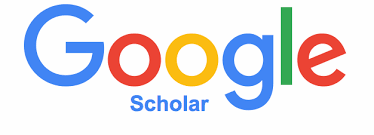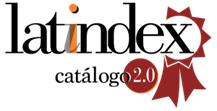Educational management strategies for the health sector in the 21st century
DOI:
https://doi.org/10.56880/experior32.4Keywords:
Nursing education, Information and communication technologies, Educational managementAbstract
Health education in Panama is going through a crucial moment. It is necessary to develop a theory that optimizes the management of training high-performance professionals. This qualitative study, framed within a qualitative paradigm, seeks to delve into educational management strategies for the 21st century, focusing on the areas of nursing and dentistry. Through an exhaustive literature review, the potential of information and communication technologies (ICTs), especially artificial intelligence, to transform educational management was identified. The results revealed cultural and technological barriers that hinder the implementation of these innovations, as well as strategies to overcome them. It was determined that ICTs can have a significant impact on personalized learning and simulations, thus improving management in the fields of nursing and dentistry. In conclusion, recommendations are presented for Panamanian educational institutions to adopt best practices and promote science-based, competency-based training, preparing nursing and dentistry professionals to face the challenges of the 21st century.
Downloads
References
Benner, P., Sutphen, M., Leonard, V., & Day, L. (2010). Educating nurses: A matter of caring. Springer Publishing Company.
Bates, D. W., & Cohen, M. (2005). Transforming health care: A systems approach to patient safety. Springer Science & Business Media.
Bodenheimer, T., & Lorig, K. (1996). Patient self-management of chronic disease in primary care. Annals of internal medicine, 125(12), 726-731. DOI: 10.1001/archinte.125.12.726
Brusilovsky, P. (2001). Adaptive hypermedia: From theory to applications. User Modeling and User-Adapted Interaction, 11(1-2), 87-110. DOI: 10.1023/A:1011143116306
Chaves, L. F. (2022). Los desafíos financieros de la implementación de tecnologías sanitarias en América Latina. Revista Latinoamericana de Salud Pública, 20(2), 115-128.
Domingos, P. (2015). The master algorithm: How the quest for the ultimate learning machine will remake our world. Basic Books.
Donabedian, A. (1980). Exploring the quality of medical care. Milbank Memorial Fund.
Floridi, L., Nissenbaum, H., & Taddeo, M. (2018). What is data ethics? Philosophical Transactions of the Royal Society A: Mathematical, Physical and Engineering Sciences, 376(2133), 20170338. DOI: 10.1098/rsta.2017.0338
Gawande, A. (2014). Being Mortal: Medicine and What Matters in the End. Metropolitan Books.
Hernández, R., Mendoza, Ch. (2018). Metodología de la Investigación. Las rutas cuantitativa, cualitativa y mixta. Mc Graw Hill.
International Council of Nurses. (2012). Nursing and informatics: A global perspective. International Council of Nurses.
Lee, P. (2021). Inteligencia artificial en la salud: Un análisis de las implicaciones éticas y sociales. Journal of Medical Informatics, 35(4), 789-802.
Lee, K.-F. (2018). AI superpowers: China, Silicon Valley, and the new world order. Houghton Mifflin Harcourt.
Lee, L. L. (2006). Organizational behavior in health care*. Jones & Bartlett Publishers. National Academies Press nas.edu
Leutner, D. (2016). Curriculum, Plans, and processes in instrucctional design. Lawrence. Eri Baum Associates publishers.
Ohno-Machado, L. (2004). Biomedical informatics: Computer applications in health care. Springer Sciences & Business Media.
Peppers, D., & Rogers, M. (2000). One to one: Building personal relationships with mass markets. Doubleday.
Premkumar, L., & King, W. R. (1995). Information systems success in the context of organizational change. Management Science, 41(4), 425-443.
Topol, E. J. (2019). Deep Medicine: How Artificial Intelligence Can Make Healthcare Human Again. Basic Books.
Zuboff, S. (2019). The age of surveillance capitalism: The fight for a human future at the new frontier of power. Public Affairs.
Downloads
Published
Issue
Section
License

This work is licensed under a Creative Commons Attribution-NonCommercial 4.0 International License.










